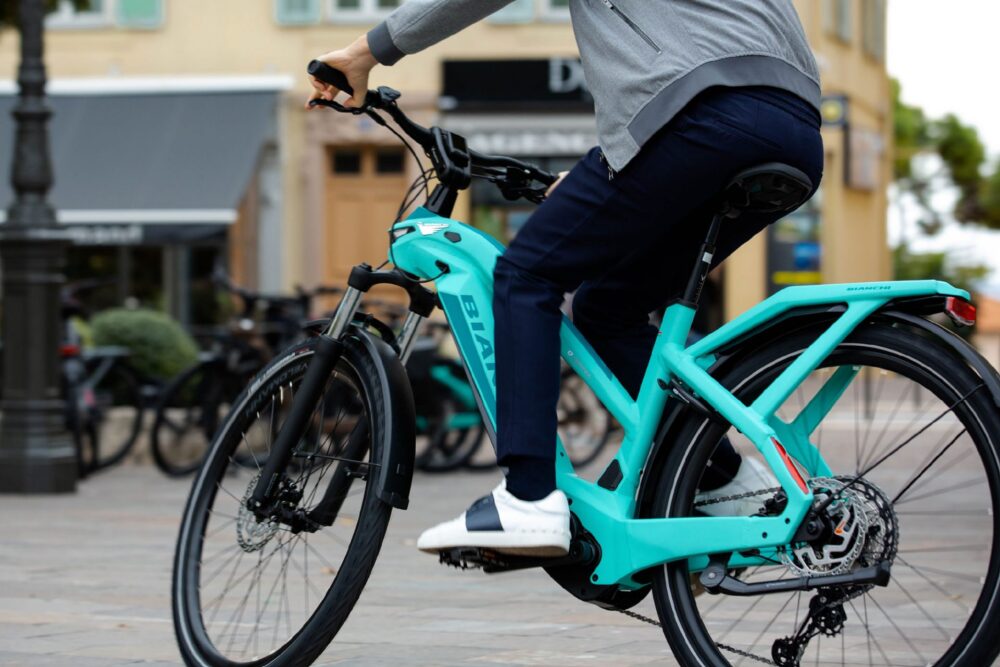With the e-bike market constantly growing and an ever-increasing production, it is not easy to choose the right model that meets your needs, especially if you are not very familiar with the world of electric bikes. The choice of the most suitable electric bike depends on many aspects, including the use you intend to make of it and your personal preferences.
The world of electric bicycles offers a range of solutions for all needs, from city electric bicycles to racing ones, ending with mountain bikes.
In this article, we will explore the main factors to consider before making this important purchase and we will give you our advice to help you make an informed choice of the best electric bike. Let's go.
Type: Mountain bike or Urban Electric Bike?
The choice between a mountain bike and an urban model depends mainly on how you intend to use the electric bike. If you are a fan of more challenging trails, off-road routes and mountainous trails, an electric mountain bike could be the ideal choice. With powerful suspension and rugged tires, these bikes are designed to tackle rough terrain.
Visit the catalog of electric mountain bikes
On the other hand, if your intention is to use the bike mainly in an urban environment, for daily commutes or relaxed walks, an urban model may be more suitable. These e-bikes are designed for riding on asphalt roads and gravel roads, offering comfort, agility and design suited to the city environment.
Visit the catalog of electric city and trekking bikes
Consider your lifestyle and specific needs to determine whether an electric mountain bike or urban model is the best choice for you. Both offer unique benefits, and the key is finding the electric bike that perfectly suits your riding style and planned activities.
Motor: Heart of the Electric Bike
The engine is, of course, the element that distinguishes one electric bicycle from a traditional bicycle. It provides pedaling assistance, making it easier to overcome slopes and travel long distances.
As we said before, the choice of engine depends on the use you intend to make of it. In an electric bike the motors can be positioned at the front, rear or in the center, each with their own advantages. For example, a mid-engine balances weight better and optimizes the use of the transmission, being more efficient on rough terrain.
Some examples of central engines are:
- Bosch Performance Line: This engine is known for its power and versatility, making it ideal for passionate cyclists and those seeking high performance. With high torque and instant responsiveness, the Performance Line is perfect for hilly terrain and for those who want a sportier driving experience;
- Bosch Active Line: Designed for urban and recreational cyclists, the Active Line offers a softer, quieter ride. With less power than the Performance Line, this motor is ideal for daily commutes and relaxed rides, providing enough support without overwhelming the rider;
- OLI Edge: OLI is an everything brand Italian which is gaining popularity for its range of electric motors, including theOLI Edge. This engine stands out for its value for money, offering reliable performance at a lower cost than some of its competitors. The OLI Edge is an excellent choice for those looking for an affordable option without sacrificing too much in terms of power and reliability.
- Ananda M81: Known for its combination of power and efficiency, the Ananda M81 motor is the ideal choice for cyclists looking for high performance without compromising battery life. Used on both mountain bikes and urban bikes, several of our brands are fitted with it.
Then there are motors mounted on the hub of the rear wheel, characterized by much reduced power and autonomy compared to central motors but placed in a much cheaper price range, in this case you can only find urban bikes, no mountain bikes.
Battery: Autonomy and Performance
The choice of battery is crucial, since it influences the autonomy and performance of the electric bike. Considering the capacity of the battery, measured in Wh, is essential, as is evaluating the lifespan of the battery. Here you will find 900Wh batteries, first marketed by Olympia, offering the widest autonomy in the world of electric two-wheelers, 700Wh, 630Wh, an average size now adopted by any brand for the right autonomy/price ratio, finally 500Wh and 400Wh in the cheapest segment.
Note that Bosh motors are less energy intensive than any other e-bike motor, allowing you to choose smaller batteries without sacrificing autonomy on the road.
Weight and size
Electric bikes tend to be heavier than traditional bicycles due to the additional weight of the motor and battery. The average weight is around 15-20 kg. The dimensions (and therefore the weight) vary depending on the model, so it is important to find the right size for you, along with a handlebar that fits your posture well.
Gearbox and Brakes
Unlike traditional bicycles, the gear system in an electric bike helps manage the energy provided by the motor, allowing you to better adapt to various terrains and slopes. Brakes are essential for safety, especially due to the increased speed and additional weight. Disc brakes are the most common in e-bikes due to their superior performance, especially in adverse conditions.
Conclusion
Choosing the right electric bike requires careful evaluation of various factors. From engine power to battery capacity, from the locking system to the type of brakes, each element plays a crucial role in the overall driving experience.
By carefully considering these aspects, you will be able to make a purchase that not only meets your personal needs but also contributes to more sustainable mobility.
Visit the shop to find the best solution for you!

